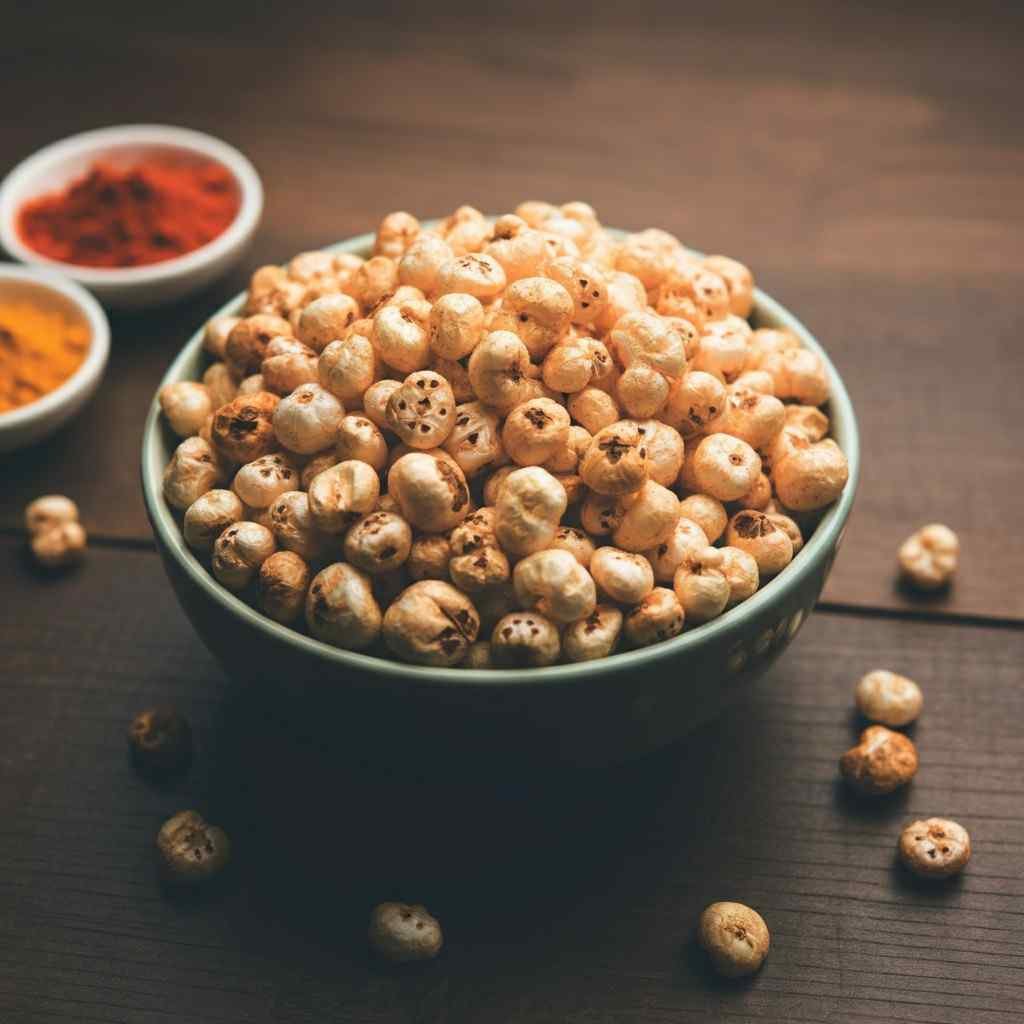
What is Makhana? The Superfood You Need to Know
Have you ever found a snack that is as light as air but packed with nutritional power? Meet makhana, also known as fox nuts or phool makhana. This humble, puffed kernel has been a staple in Indian households for centuries, but it is now gaining global recognition as a true superfood.
This article will take you on a journey to discover everything about makhana. We will explore its fascinating origins, uncover its impressive nutritional profile, and see why it holds such a special place in Indian cuisine and culture. Get ready to learn why this ancient snack is perfect for a modern, healthy lifestyle.
From Pond to Pantry: The Origin of Makhana
Makhana is not a nut at all. It’s the seed of the prickly water lily plant, scientifically known as Euryale ferox. This aquatic plant thrives in the still, shallow waters of wetlands and ponds across Asia. The majority of the world’s makhana supply comes from the Mithila region of Bihar, India, where its cultivation is a deeply ingrained tradition passed down through generations.
The journey of makhana from a muddy pond to a crispy snack is a labor-intensive process that has remained largely unchanged for centuries.
- Harvesting: Skilled farmers wade into the water to collect the mature, black-colored seeds from the bottom of the pond. This is a challenging task, often done by hand.
- Cleaning and Drying: Once collected, the seeds are thoroughly washed to remove mud and debris. They are then spread out under the sun to dry for several hours, which reduces their moisture content.
- Roasting and Popping: The dried seeds are roasted in hot sand in large iron pans. This crucial step heats the kernel inside the hard black shell. The seeds are then immediately transferred to a hard surface and struck with a wooden mallet. The sudden change in pressure causes the kernel to expand and pop, breaking through its shell and emerging as the white, puffed makhana we recognize.
This intricate, manual process highlights the dedication and skill involved in bringing this superfood to your kitchen.
Superfood Makhana: A Nutritional Powerhouse
Makhana’s rise to fame is no accident. Its exceptional nutritional profile makes it a standout choice for health-conscious individuals. It is low in calories, fat, and sodium, yet rich in essential nutrients. Let’s explore the makhana nutrition facts and understand what makes them so special.
Low Glycemic Index
One of the most significant fox nuts benefits is its low glycemic index (GI). Foods with a low GI release sugar into the bloodstream slowly, preventing sharp spikes in blood glucose levels. This makes makhana an excellent snack for individuals managing diabetes or anyone looking to maintain stable energy levels throughout the day.
Rich in Protein and Fiber
Makhana is a good source of plant-based protein, which is vital for muscle repair, immune function, and overall body maintenance. It is also high in dietary fiber. Fiber aids in digestion, promotes a feeling of fullness, and supports a healthy gut microbiome. The combination of protein and fiber makes makhana a highly satisfying snack.
Packed with Antioxidants
These small puffs are loaded with antioxidants, such as kaempferol, a flavonoid also found in coffee and green tea. Antioxidants help combat oxidative stress and fight free radicals in the body, which can reduce inflammation and lower the risk of chronic diseases.
Excellent Source of Micronutrients
Makhana contains an impressive array of essential micronutrients, including:
- Magnesium: Crucial for heart health, nerve function, and maintaining blood pressure.
- Potassium: Helps regulate fluid balance and counteract the effects of sodium.
- Phosphorus: Important for building strong bones and teeth.
- Manganese: Plays a role in bone formation, metabolism, and antioxidant defense.
This nutrient-dense profile confirms makhana’s status as one of the best superfood snacks, offering substantial health benefits in every light and crunchy bite.
Makhana for Weight Loss: A Smart Snacking Choice
If you are on a weight management journey, makhana can be your best friend. Its unique properties make it an ideal snack for shedding pounds without feeling deprived.
The high fiber and protein content in makhana helps you feel full for longer, reducing the temptation to reach for unhealthy, high-calorie snacks. Since it’s naturally low in calories and fat, you can enjoy a generous portion without derailing your diet. A cup of roasted makhana contains significantly fewer calories than a similar portion of potato chips, making it a smarter choice for guilt-free munching.
The Cultural Significance of Makhana in India
Makhana is more than just a healthy snack in India; it’s woven into the country’s cultural and spiritual fabric. Its perceived purity makes it a favored food during religious fasting periods, such as Navratri. During these times, grains are often avoided, and makhana serves as a permissible and nourishing source of energy.
Beyond religious observances, makhana is a versatile ingredient in Indian cuisine. It appears in a variety of dishes, from savory curries to decadent desserts.
- Makhana Kheer: A creamy, rich pudding made with milk, sugar, and makhana, often flavored with cardamom and saffron. It is a popular dessert during festivals.
- Roasted Makhana: The simplest and most popular way to enjoy it. The puffs are dry-roasted or lightly fried in ghee and seasoned with salt, pepper, or other spices.
- Makhana Curry: In some regional cuisines, makhana is added to rich, tomato-based gravies, where it soaks up the flavors and adds a unique, chewy texture.
This versatility has ensured its enduring popularity in Indian kitchens for generations.
Incorporating Makhana Into Your Diet
Embracing the health benefits of makhana is easy and delicious. Its neutral flavor profile allows it to adapt to both sweet and savory preparations.
Here are a few simple ways to add this superfood to your daily routine:
- As a Snack: Roast makhana with a teaspoon of ghee or olive oil and season with your favorite spices like turmeric, paprika, or chaat masala.
- In Trail Mix: Combine roasted makhana with nuts, seeds, and dried fruit for a nutrient-packed, on-the-go snack.
- As a Cereal Topper: Add a handful of makhana to your morning cereal or oatmeal for an extra crunch and a boost of protein.
- As Croutons: Use roasted makhana as a gluten-free alternative to bread croutons to add texture to your soups and salads.
The Final Word on Makhana
Makhana is a perfect example of an ancient food that fits seamlessly into a modern, health-focused lifestyle. From its origins in the serene ponds of Asia to its role as a global superfood, this popped water lily seed offers a unique combination of taste, nutrition, and cultural heritage.
Whether you’re looking for a diabetic-friendly snack, a weight-loss aid, or simply a delicious and wholesome treat, makhana delivers on all fronts. So, the next time you’re looking for a snack, consider reaching for a bowl of these light, crunchy, and incredibly nutritious puffs.
For more articles, click here









